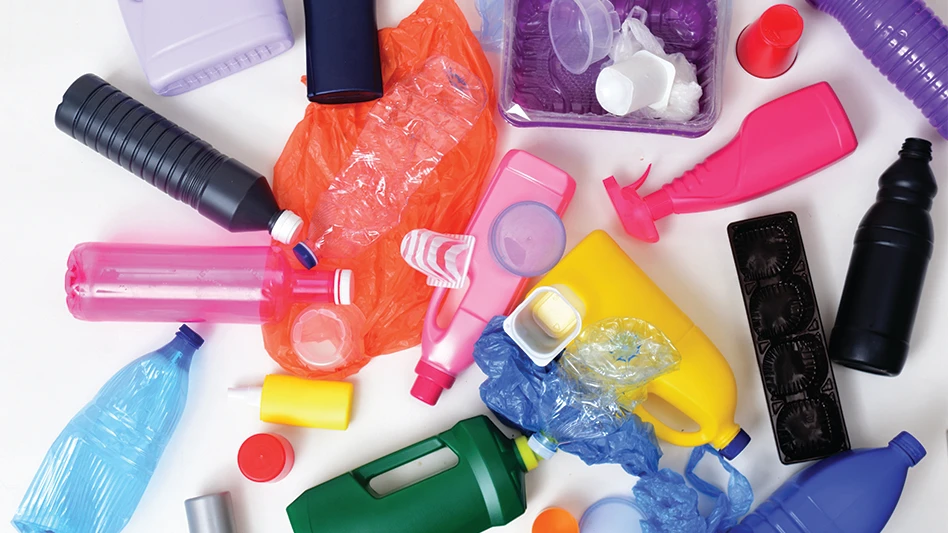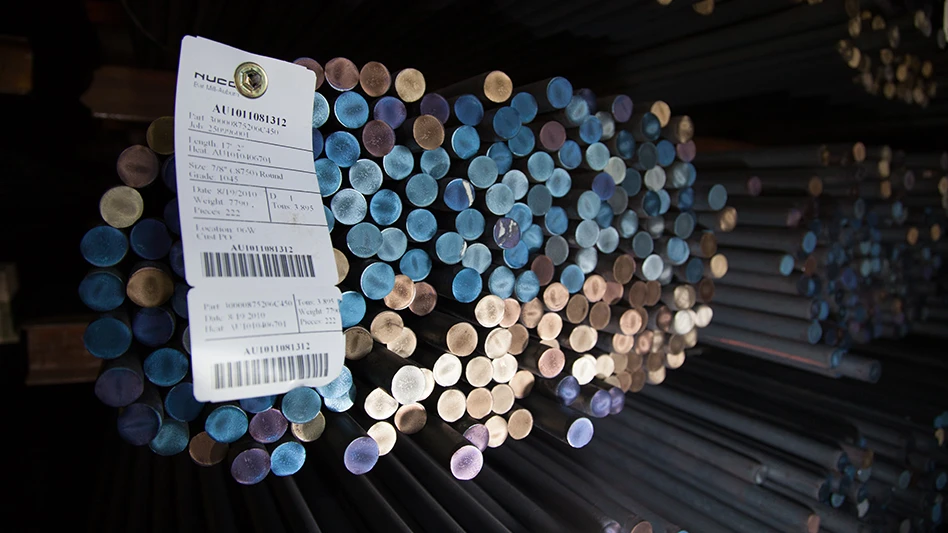Although Germany has caught all the headlines during the past few years with its far-reaching recycling and waste reduction initiatives, less attention has been given to the rest of Europe. Now, a directive from the European Union – superseding any national laws – gives the countries of the European community until June 30, 1996 to establish packaging waste reduction and recycling laws and sets EU-wide goals for recycling. Representatives of France, the United Kingdom and Belgium spoke of the effects of this directive on recycling in their countries at a presentation last month during the National Recycling Coalition’s annual convention in Kansas City.
FRENCH RECYCLING PROGRESS
“France is famed for its old historical sites, night entertainment, state of the art business and technology, and now, for its innovative recycling systems,” says Eric Guillon of Eco-Emballages, Paris. “I am pleased to see that the international aspects of recycling are gaining more ground, and the environmental and business constituencies are becoming more interdependent. This is true for the united European nations and will be the same around the world.”
France has gone the private recycling route, according to Guillon. The French government passed a recycling decree, after intense negotiations with members of the packaging industry, and Eco-Emballages, a private company, received government authorization to fulfill three basic missions: “collect funds from companies, channel these funds from producers to municipalities that will form collecting and sorting programs for packaging, and organize guaranteed markets for those materials, which are contracted through Eco-Emballages,” says Guillon.
The Eco-Emballages proposal that was presented and accepted by the French government calls for 75 percent “valorization” of household recyclables – generally food and beverage containers – by the end of 2002. Valorization is defined as a combination of recycling and energy recovery from clean incineration, according to Guillon.
To accomplish this goal, Eco-Emballages plans to raise the equivalent of $500,000 annually to cover the cost of servicing 95 percent of French households with recycling and valorization programs.
“Creating a strong consensus along the packaging chain, Eco-Emballages acts as a catalyst between the various sectors of consumer goods and municipalities,” he says.
The European directive on recycling requires the member countries to put in place the necessary infrastructure to reach, by July 2001, between 50 percent and 60 percent packaging valorization, by weight, says Guillon. Within this local objective, between 25 percent and 45 percent of all packaging waste must be recycled. In addition, the directive calls for a recycling rate per type of packaging material of 15 percent.
“This European directive on recycling overrides all national regulations,” says Guillon. “In a country like France, with its 36,000 municipalities and 95 departments, it was essential to provide a long-term commitment in terms of guaranteed markets in order to get the ball rolling. And for the same reasons, we will support the extra cost of collection and sorting to municipal programs for a minimum of six years, so we have a six-year contract with municipalities.
“To date, 8,000 member companies contribute over $100 million per year to Eco-Emballages; that is to say, roughly 90 percent of the market potential,” Guillon continues. “Over 85 percent of consumer goods are now marked by Eco-Emballages green dot, which is not to be confused with the German green dot.”
RESEARCH AND DEVELOPMENT
More markets currently exist in France for post-industrial materials than post-consumer materials, so Eco-Emballages is working to develop post-consumer markets, says Guillon. “We sponsored a large number of research and development projects with the idea of targeting balance between generation and demand inside the French territory,” he explains. “This is not an easy task. Our priority is on studies, sorting techniques, and end market development.”
Plastics is the program’s top priority, because it is the most difficult material to recycle, says Guillon. The company is spending $16 million in technological support towards plastic recycling.
“Our effort is to increase PVC recycling, because we have a tremendous market for mineral water,” he explains. “There is also work on PET, HDPE and mixed plastics. We are interested in new sorting technologies and end market development.”
Eco-Emballages is also researching pyrolysis for recyclables made from composite packaging materials.
“In France, 40 percent of the packaging waste is incinerated in about 300 units spread across the country,” says Guillon. “Therefore, we are focussing on recovering post-incinerated metals. We are even working on sorting aluminum wine bottle caps – just imagine the tonnage in France.”
In addition, the country is starting a buy recycled program, which is still in the early stages.
PUBLIC EDUCATION
France is “an old country with lots of differences,” says Guillon. “From north to south, east to west, mentalities are different, so changing attitudes towards waste is not an easy task.” But Eco-Emballages has devoted significant resources to the task. “We provide municipalities with communications tools and guides, as well as local workshops and background studies to support the formation of their plans.”
Guillon says the country is taking a long-term approach to changing attitudes and habits, with an emphasis on training and education. “We have a ten-year plan to change attitudes, make recycling work nationwide, and to set up new industries and related processes,” he says.
Currently, 50 percent of the municipal solid waste generated in France is landfilled, 40 percent is incinerated, and 10 percent is recycled or composted, according to Guillon.
UNITED KINGDOM
Like other countries in the European Union, Britain is starting to get interested in recycling and waste reduction, according to Jan McHarry of the National Recycling Forum, London.
“There are a lot of challenges and opportunities for Britain and its waste management and recycling policies,” says McHarry. “We’re beginning to see the buzzwords ‘sustainable waste management’ and ‘producer responsibility’ on the agenda. As one of our largest waste management companies said, our waste mountain is big enough to fill every truck in a six lane motorway from London to Tokyo, and set to grow even bigger.”
According to the same company, she adds, Britain would have to open a new landfill every week for the next ten years in order to landfill all of its waste.
“Their survey, which they conducted recently, found that businesses are generally failing to see waste as the next area of competitive advantage,” says McHarry. “Almost half of the U.K. industry does not have a waste minimization policy, and companies don’t know how much they spend on waste.
“The National Recycling Forum was set up in 1991 to promote waste reduction, reuse and recycling,” McHarry continues. “The forum now has over 200 members, from a diverse range of sectors. Most importantly, it is a public-private strategic alliance.”
The U.K generates about 35 million tons of solid waste per year, according to McHarry, 20 million tons of which is household waste and 15 million tons is commercial waste. Currently, she says, 90 percent of that is landfilled and the rest is incinerated or recycled.
“Landfilling has traditionally been the cheapest disposal option, but that is changing and landfill costs are set to rise under a new waste management licensing system and the imposition of a landfill levy next year,” says McHarry. “This is aimed at encouraging diversion from landfills, and it’s estimated this will cause a about a 50 percent rise in cost. Landfill costs currently can be as cheap as 25 British pounds, or $35 a ton.”
This imminent cost increase is causing waste management officials to take a new look at their options, she says. “There’s a need to focus on reuse, waste reduction and recycling.”
Although more than 50 percent of household waste generated in the U.K. is estimated to be recyclable (this includes compostable organic material), says McHarry, currently only 5 percent is recovered.
“The U.K. government has set a goal to recycle 25 percent of household waste by 2000,” she says. “This is a huge challenge, because at the moment only one local authority is near that target, at 21 percent. Progress is slow and variable. Curbside programs are becoming more common, but not every household is serviced yet. But community recycling is very active, and a lot of educational material is coming from that community sector.”
Despite the 25 percent goal, there is no actual legislation promoting recycling in the U.K. – no minimum content regulations or landfill bans like there are in the U.S.
“So the reliance is very much placed upon the voluntary approach,” says McHarry. “Local authorities have been mandated to complete recycling plans, but there is no overall national framework to balance it. Luckily, after years of lobbying and pressure by organizations such as National Recycling Forum, a government concentration paper was issued earlier this year, and the government was subsequently overwhelmed with 500 detailed responses. People said ‘this is a good start, but if we are really to shift to a proper waste reduction and recycling focus in Britain, there are important measures that we have to put in place.’ So we now have to wait until the beginning of next year to see what this waste management structure is going to be.”
The U.K. concentration paper adopted an attitude that no single waste management option is better than the others, says McHarry. “The U.K. is also considering market-based initiatives, which seek to make environmental costs explicit. The instruments already in place include recycling credits, producer responsibility and a landfill levy.”
A producer responsibility initiative was launched in1993, by the U.K. environmental minister, who was asked to develop an industry-led program to handle the extra costs of new collection and processing of materials.
“This will act as a catalyst to make companies think more carefully about the products they design, as well as making environmental considerations and environmental cost a part of business management,” says McHarry.
“Packaging represents 5 percent of materials in landfills,” she continues. “These materials are highly recyclable and high in energy value. In 1994, the government environment committee suggested that the U.K.’s 25 percent target recycling rate for household waste will depend on whether a high recovery rate can be achieved. The idea of a levy on products has been agreed upon. But the point in the chain where this will be applied, and whether it will be voluntary or legislated, has been the subject of intense discussion and disagreement among various sectors.”
As in any country, the U.K. has found that plastic is one of the more difficult materials to recycle, says McHarry. “By 2001, at least 15 percent of our plastic packaging must be recycled, according to the EU directive,” she says. “At present we are at 8 percent, so we are beginning to see initiatives. We’ve also seen initiatives in scrap metal and C&D debris recycling.”
U.K. BUY RECYCLED
Markets for materials generated are as much a concern in the U.K. as they are in the U.S. To deal with this question, the NRF formed a Buy Recycled Program aimed at raising awareness and stimulating demand for recycled products.
The NRF Buy Recycled program has more than 65 corporate members, and has so far produced a recycled products guide, a newsletter, case studies, informational material, surveys, and outreach projects.
The country is seeing progress, she adds. More material recovery facilities are coming on stream, more markets are being created for recyclable materials, and there are many opportunities in the recycling field.
RECYCLING IN BELGIUM
Europe has been settled by larger numbers of people for a longer time than the U.S. This means more people live in cities, and cities have their own specific recycling issues, says Serge Kempeneers of the Association of Cities for Recycling, Brussels.
“In Europe, lots of people live in cities – about 80 percent,” says Kempeneers. “If we want sustainable development, we have to do it there.”
In 1990, he continues, Europe experienced a kind of metaphoric earthquake of rising landfill and incinerator costs, along with the European directive for recycling. As a consequence, recycling is beginning to play a more prominent role in Europe.
“We have the EU directive, national laws and local laws about recycling,” says Kempeneers. “These laws are not only about packaging waste, but also about office waste, hospital waste, and so on. And so the earthquake resulted in better control in waste management. There are a lot of landfills closing in the next few years. There are a lot of incinerators that produce too many emissions. All these things happened since 1990, and we are still in a storm. We’re in transition, not exactly sure where we are going.”
But there are increasing numbers of people on the local level that find themselves responsible for waste management and recycling, and who need information about how to manage materials effectively.
“Brussels was among the first cities with a waste management plan,” says Kempeneers. “We developed such a plan, and then we had a lot of people coming to Brussels and asking us what we are doing and why. So we decided to create an association of cities who want information about recycling.”
Thus Cities For Recycling, a network between public authorities in a number of European countries, was formed to facilitate the exchange of technical information such as how to achieve quality of collection, technical information about MRFs, and market information and strategies.
“The scope is focused on packaging waste because there are a lot of people attentive to the new legislation about packaging,” he explains. “Because they receive money from organizations like Eco-Emballages, they have to know what’s happening.”
When a city joins, they pay a small membership fee, and then give the association information about their recycling activities. Pertinent information includes total population, population density, single-family versus -multi-family dwellings, program history, waste composition, and waste handling methods used – landfilling, incineration, recycling.
“Our objective is that when cities are developing a new system,” says Kempeneers, “they can look at the survey, find a city of similar size, and set their program up efficiently.”
The author is editor of Recycling Today.

Explore the November 1995 Issue
Check out more from this issue and find your next story to read.
Latest from Recycling Today
- Indiana county awarded $65K recycling grant
- Mixed paper, OCC prices end year on downward trend
- Updated: CAA submits final draft program plan in Oregon
- Enviri names new president of Harsco Environmental business
- Survey outlines ‘monumental challenge’ of plastic packaging collection in UK
- Nippon Steel acknowledges delay in US Steel acquisition attempt
- BASF collaborates to study mechanical plastic recycling
- Commentary: navigating shipping regulations for end-of-life and damaged batteries





